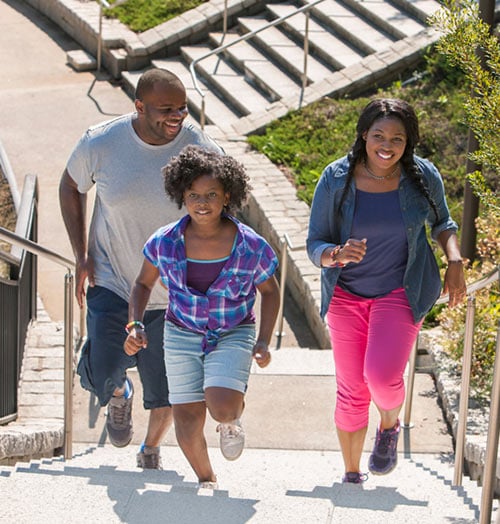Encourage Healthy Community Design
Healthy community design incorporates elements such as transportation networks, street designs, and zoning/land use policies to promote health and safety.
Recommendations

- Work with government and non-government organizations to develop and implement model transportation and land use planning policies that encourage transit-oriented and mixed-use developments. Encourage:
- Dense networks of connected streets which serve the needs of all transportation modes; for example, adopting measures such as Complete Streets.
- Roads that include robust infrastructure for bicycling and walking while mitigating the potential adverse effects of motor vehicle travel.
- Enable state and local planners to protect residents from local air pollution and noise from high-volume roads, ports, and airports by discouraging development (including schools) near these air pollution and noise pollution sources. Where possible, construct barriers to reduce nearby residents’ exposure.
- Support research to assist transportation agencies to develop street networks that facilitate active transportation and public transportation by increasing connectivity and limiting block size.
- Provide assistance to local planners to design and locate destinations for children (such as schools, parks, and libraries) within neighborhoods so that children can reach destinations without having to cross busy streets.
- Work with federal, state, and local transportation officials to ensure that all people have access to safe, healthy, convenient, and affordable transportation options regardless of age, income, and other socioeconomic factors.
- Support policies that reduce vehicle miles traveled per capita, including land use policies that reduce vehicular travel, increase public transportation service, and increase active transportation infrastructure.
Error processing SSI file
